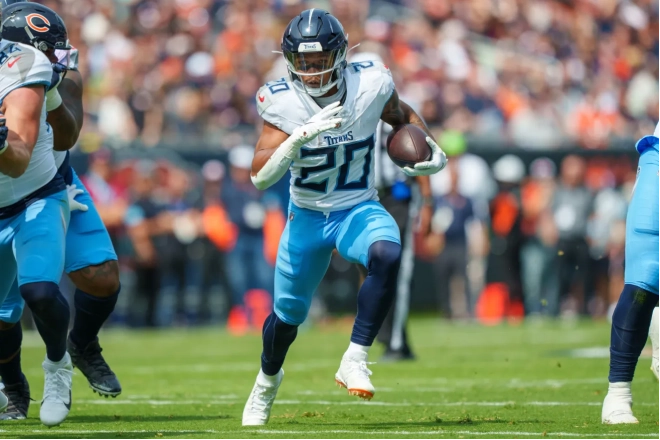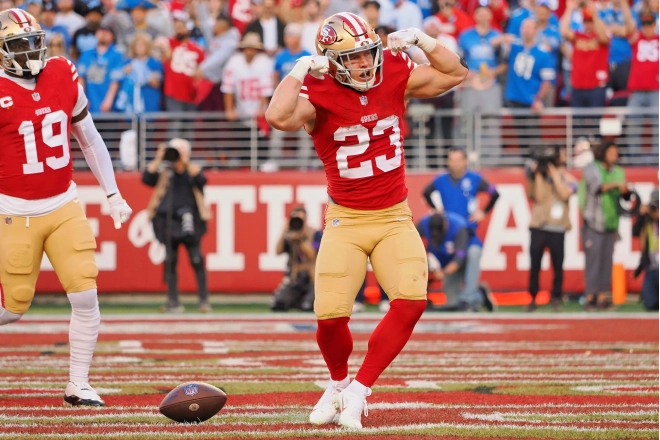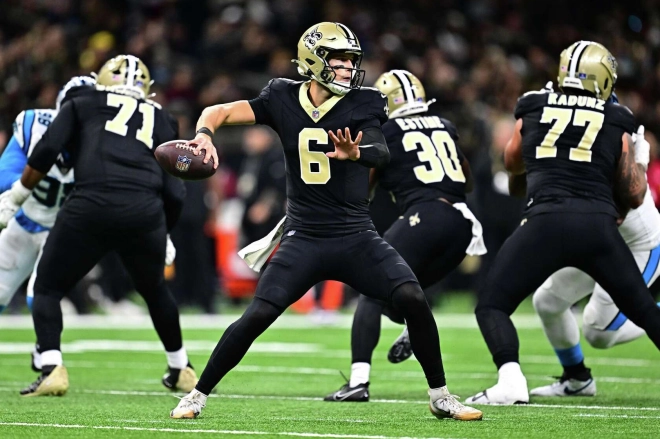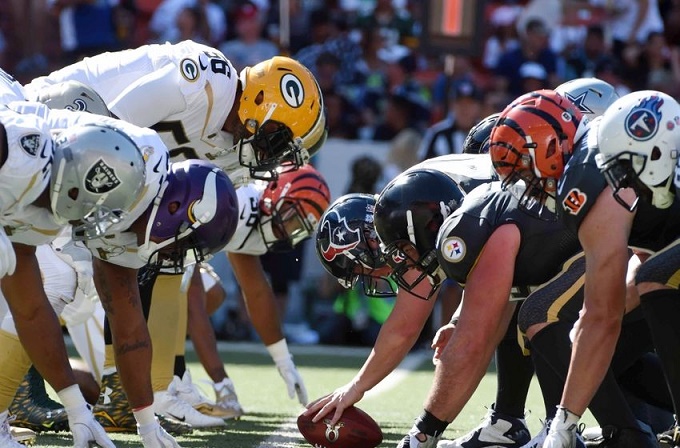There are many different ways to build a dynasty team. It is not quite as simple as grab a few vets, draft some young players to build a core, draft a rookie or three and you’re off to the races. How you view and build your roster is critical to your team’s success. View it wrong and it’s like betting on a lame horse to win the Kentucky Derby. It’s not going to happen.The following is a solid roadmap to dynasty success. Some of it is counter intuitive if you are used to playing redraft leagues. But if you are patient, and willing to put in the work your dynasty team will succeed. I believe, the key to dynasty success starts with properly viewing just what your roster is in the dynasty format. It is a 401K or stock portfolio. Then build your roster to maximize this vision.
Your dynasty roster is not a collection of players young and old that you collect and then put out a predetermined amount each week from September through December. Instead it is a stock portfolio that you own. It is your job to manage it and watch it grow so that you can be wealthy when you retire. In dynasty terms, your players on your roster are dynasty assets and your job is to grow them and your dynasty account. This means in a startup draft your job is not to field a starting lineup. Your job is to add to your roster the most value and growth potential players possible.This is a critical concept so let me repeat that. Your job is to add to your roster the most value and growth potential players possible. Most startup drafts are not in August. With early startup drafts,there is plenty of time to hit the waiver wire watch the news and add in players to fill the holes you miss during startup. Filling these holes will add the final pieces to your starting lineup. Each draft pick you own is a limited piece of currency. When you select a player with a pick you are investing in a player. The higher the pick the more “money” you are spending for the player or asset. Your first goal is to select players who have a potential for growth in player value over the next several seasons.Your second goal is to select players who will not lose value over the next twelve to twenty-four months. Player growth manifests itself in the ability of a player to move into the starting lineup from being a reserve in the NFL, or to take their game to the next level and produce better stats than before. Of these “growth” players the group that you most want to target are those that after their value increases have a longer period of sustaining that value before they decline in production. For example Rob Kelley would not be a target player but Joe Mixon is.
Winning year one is not your goal. If you draft well and hit on your draft picks and they break out on the football field it is a possibility. If that happens you are in a great position, good job. If you do not and you struggle year one to win games, it is OK. You will earn a higher draft pick for your struggles to improve your team. A higher draft pick is not your goal though. Player growth is your goal. Your players should improve from year one to year two of your league. As this happens your roster gets stronger. Meanwhile the players you avoided on other rosters are declining and a weaker opponent is an advantage to you. You find you are better able to compete. Your team can grow into a monster that other teams do not want to face. Finally you win more. The best part is since you drafted younger players, your team stays strong longer.
When you draft you want to fill your roster with three different types of assets. These assets are Core Assets, Flip Players, and Fodder.
Core Assets are the players you build your team around. these are the young studs everyone wants. These are also the players that have upside to break out that you think will continue producing at a high level for several years. They are top 12 or have top 12 potential at their position. These players are often found in the first six rounds of a startup draft and first round of a rookie draft. Mike Evans, Corey Coleman, and Corey Davis are all examples of wide receivers that are core assets.
Flip Players are players that you expect to see a rise in value but will not sustain their production either through the season or into next year. They are named flip players because you want to trade or flip them for draft picks once they start producing. These players get traded before their production declines and locks in the value growth of your roster. For example you draft Elijah Hood in the third round of a rookie draft. Marshawn Lynch gets hurt in season and you sell Hood for a second round rookie pick. A flip player should usually be considered a flip player due to talent versus being on a bad offense. For example Cleveland was 30th in yards per game and 31st in points scored offensively in 2016. They are rebuilding and adding some top offensive talent I would not be surprised to see them better this year and take a significant leap in 2018. For this reason, it would be a mistake to discount Corey Coleman or David Njoku to flip player status. Flip players are found mostly in rounds seven or later in startups and round two and beyond of a rookie draft. Will Fuller, Jonathan Williams, John Ross, and Elijah Hood are.examples of flip players. The key here is to flip them for more than you paid for them.
Fodder is a player who is there to fill in the gaps as a starter that can produce now only or an open spot on your roster. They are used mostly in bye week situations or in case of injury. They can also be high risk, high reward sorts of player that are liable to crash and burn quickly. If they hit you immediately turn around and sell them for whatever profit you can get. These are the players that when it is time to cut down your roster they are the first to be cut (because odds are you cannot trade them.) Fodder can usually be found in rounds 15 or later in startup drafts. Rookies from round three of later if they don’t break out after a year or two can turn into fodder. They key for the small amounts of fodder you add to your roster is the price you pay. You do not want to draft an aging vet until late in a startup draft. It is rare you want to trade a rookie pick for fodder. It’s better to stay on top of your waiver wire and add them. This way when their value declines you did not pay much for them and it will not affect your roster portfolio much. For example, you may have picked up Marshawn Lynch on the waiver wire when rumors first surfaced of him unretiring. He is fodder. If he did not come back you lost nothing. If he starts for the Raiders you may be able to flip him for a rookie pick that is amazing and he improved your roster value. As the value of your roster rises and you flip players of value for more picks the amount of fodder on your roster will decrease. Amen! Adrian Peterson, Jamaal Charles, DeAndre Smelter, and Ishmael Zamora are all examples of fodder.
A critical decision is what assets to collect. Typically you want to collect wide receivers with PPR scoring. There are a lot of running backs that can score you points but the true top receivers are rare. There can be a lot of WR2 that can perform for you too. What separates the the running backs and wide receivers is longevity. By age thirty running backs are in decline where wide receivers do not decline until age 32 to 34. Also running back is the more volatile position. You will find NFL teams switching running backs in season due to poor performance or injury. Many breakout running backs enter the off-season without a secure hold on their starting role and often will be replaced.
There are some exceptions to this general rule. You need to know your leagues scoring rules and the number of starters. If it is super-flex where you can start two QB, then the QB position trumps all. You want to collect two top options if you can. Quarterback usually have scoring friendly formats and with only 32 starting QB in the NFL, dynasty production at the position gets thin awfully fast. Then add more as the draft progresses grabbing future starters like Paxton Lynch or Jimmy Garoppolo is very important. Quarterbacks have the longest shelf life and two elite ones will give your team a significant advantage in this format. The additional depth at QB gives you the luxury to sell your talent for a windfall to improve your team later. Tight end heavy leagues often either have a premium for ppr scoring to the tight end position or you start two tight ends. These leagues warrant drafting a tight end early and adding depth throughout the process. In the start two tight end formats grabbing an elite option like Gronkowski or Kelce and following it up with another top twelve option creates a significant scoring advantage that has value. A newer scoring concept is point per carry formats. This format usually adds a half point per carry and the young three down running backs gain elite status and are worth grabbing over the elite wide receivers. This evens the playing field and adds solid depth to the running back class. The other thing it does is comparatively bring down the production of wide receivers and you can take a more balanced approach in drafting the two positions. Keep in mind running backs have shorter life spans so if you are going to invest in them you are targeting the younger backs who have the talent to keep control of the starting job they have earned. Finally rookie picks are always a good investment as long as you do not overpay for them. Rookie picks hold their value because there is not specific name attached to them. If a player falls in the draft evaluation process another player will take his spot in the draft order. When rookie picks are included in the startup draft they should be targets as long as the veteran talent available does not exceed the general talent projected to be available for the rookie pick. For example ask yourself which is better Amari Cooper or Joe Mixon (or whoever you project best available at 1.3 rookie)?
Trading is integral to the 401K strategy. For this you must be active all season. Not all trading is good. Day Trading or “win now” trading is to the 401K strategy like garlic is to a vampire. With win now moves you are trading future assets for players that will help you win now, and in a year their trade value will be less than what you paid for them. Odds are to make a win now move you traded for a flip player or fodder to win and their value declines. Often a day trade is not enough to win you a title. So avoid them and keep your roster portfolio strong. You are not day trading if you are trading for core assets if they help you win now. These assets retain their value and you can exit from them with close to or similar cost of what you paid for them.
A good trade is a solid investment to your roster that will help it gain value over time. A solid investment is any trade that moves a rookie pick, flip player or fodder for better rookie picks and/or better players or multiple rookie picks and/or multiple flip players. Another sound trading idea is exiting from an aging core asset before their stats decline. Just like in the stock market you will never sell a stock at it’s peak. Smart fund managers well sell off rising stock as it approaches the end of its peak performance and then invests the capital in stock they think will rise to repeat the process. This is exactly how you should approach your core assets.Odds are you will not be able to sell after your core assets best season for maximum value. So exit early before decline. For example, don’t be the owner left holding Antonio Brown.
Sometimes you will need to make a lateral move and switch stocks. This is critical. A perfect example is Donte Moncrief. I bought him after his rookie season for a second round pick expecting him to grow and become a potential core asset as TY HIlton ages. After two average seasons the upside for Moncrief is dwindling as he is turning into an average WR2. Hilton was resigned and is two plus years before he (Hilton) hits decline. If Moncrief continues on this path he will lose value as people will be less willing to take a chance on him. Moncrief is now a flip player with potential of just becoming fodder over the next few seasons. I included Moncrief in a trade this offseason and got the 2017 2.1 rookie pick. The pick was higher than the pick paid but more importantly I reset the clock by drafting Evan Engram. Engram’s value is high and has several years to produce and grow into a core asset for my team or possible trade for a draft pick windfall. While this is a lateral move value wise I moved from an asset with dwindling upside to one with high upside. If Engram does not break out in a few years, I can repeat the process. Though they (lateral moves) do not gain in value for your roster they can be critical for your roster health.
Finally, when in a startup league you need to stock your team with growth assets. This is accomplished by trading down in the startup draft. Your best asset will always be your first round pick. Trade it. Whether you do multiple trades to trade back and pick up additional assets or just trade back into round two directly you want to score several top assets. You are looking for multiple top 25 to 30 startup picks and first round rookie picks not only for the current year but future years as well. As you draft you should have specific types of players you are targeting for your format. Be aware of ADP of your targets. If the ADP is close and you must have the player because he means that much to you, go ahead and take him. If the ADP is significantly lower trade back and pick up more picks. If you have multiple targets at a spot trade back and pick up something additional later. Early in the draft you are looking for the 2-1 deal where you are getting the two or more players side. Because you are drafting growth assets and many of them they will insulate each other and grow over time and your roster value will rise. As the draft progresses as you find you have more picks than roster spots you can package those later picks to trade up to grab a target player or out to the next rookie draft. In startup drafts you rarely want to trade up and spend more assets. Instead stick you your growth targets and let the draft come to you. This preserves your roster portfolio.
These concepts are solid for the dynasty format. A roster either grows or it withers and dies. If it dies you are then blowing the team up in an attempt to rebuild it to youth. If you have traded away future first round picks you may have to wait several years to rebuild your roster. If you employ the 401K approach you will constantly have a healthy roster and over time not only be a lock for the playoffs but one of the perennial favorites to win your league. This only scratches the surface of the 401K view to rosters. There is a lot to digest. If you have any questions please feel free to shoot me an email. It is





